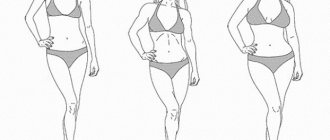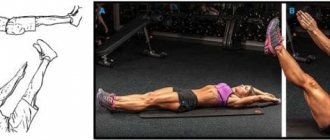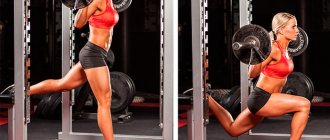How music affects sports
Probably everyone who plays sports has felt the beneficial effects of music during training: it lifts your mood, sets the pace for exercise and helps you set new records for strength, speed and endurance.
For those for whom personal experience is not enough, science can convince. Canadian study Music enhances performance and perceived enjoyment of sprint interval exercise. 2020 confirms the thesis about the positive impact of music on a person’s productivity and mood when performing a series of short intense exercises. And Japanese specialists from the Center for the Humanities have proven the Effects of music during exercise on RPE, heart rate and the autonomic nervous system. that music helps reduce stress caused by fatigue and increase comfort during cardio exercise.
The psychological factor plays a decisive role in this, but the experiment Physiological and Psychophysical Responses to Listening to Music during Warm-Up and Circuit-Type Resistance Exercise in Strength Trained Men. Iranian researchers conducted in 2015 confirm the influence of music on physiological indicators: blood pressure and pulse.
Music also helps set records in strength exercises. Results of the experiment Listening to music affects diurnal variation in muscle power output. Experts from the National Center for Medicine and Sports Research indicate that music helps increase average and peak power during training.
How to make the right playlist
To create the perfect playlist, we recommend following certain rules.
Include your favorite songs in the selection
We didn't recommend listening to your favorite music at work or on the road, but now you can finally. Health and a beautiful body are, of course, important, but we should not forget about pleasure. Include songs that are always uplifting but distracting in other circumstances.
Use music from different genres
Even in the playlists of professional athletes, dance music may coexist with alternative rock, pop or country. There's nothing wrong with that. On the contrary, it will help make your workout more interesting and varied.
Pay attention to the pace
But the pace is really important. It is abbreviated as bpm and is measured in beats per minute. You can find out the tempo of a song by searching in a search engine by adding bpm to the title of the song. It is important to take into account several nuances:
- Try to select songs in the range of 120–145 bpm . This pace is suitable for most exercises.
- Build up the pace gradually . Do you start your workout with a warm-up? Let the playlist match: it would be great to start with a motivating song at a low tempo.
- Don't use Shuffle . In an ideal playlist, the arrangement of tracks corresponds to a certain scenario, so random order will only do harm here.
- Choose music for specific exercises . Ideally, each of the repetitions will be in sync with the beat. For example, many track and field athletes choose music at 180 bpm to match the running cadence. You can use another principle: turn on powerful and motivating songs during strength exercises, and listen to soft and relaxing ones during cardio training.
Don't neglect pop music
We have already talked about the optimal tempo - 120–145 bpm. Pop songs tend to fit it. Moreover, they are often energetic and light - what you need for training.
Choose songs with motivational and life-affirming lyrics
Sometimes a motivating text can provide additional psychological support. For example, the song Don't Stop Me Now by Queen. Her pace can hardly be called optimal for training, but with just her message she can charge you with energy for new achievements and several approaches beyond the norm.
Gym training program for men
The main mistake of many novice athletes is to immediately try to lift heavy weights. Yes, increased load is an indispensable attribute of men’s training, but you need to start any activity with light loads.
Training program in the gym for weight loss
Activities aimed at reducing weight and body fat may include:
- cardio training - to warm up and activate metabolic processes;
- strength and endurance training with light weights but high repetitions;
- supersets, when several exercises are performed in a row, without a break;
- circuit and interval sets;
- exercises with heavy weights so that the muscles become larger and more prominent.
Mass training program in the gym
To increase muscle mass, it is recommended to train intensely, at the limit of your capabilities, but not more than one hour. If you exercise longer, overwork may occur and instead of muscle growth, the athlete will burn them. Basic exercises are suitable for gaining weight. An approximate training program in the gym 3 times a week might look like this:
- The first day:
- placing plates or dumbbells;
- bench press;
- Incline dumbbell bench press;
- reverse push-ups;
- hanging leg raises.
- Second day:
- deadlift;
- Bent-over barbell row;
- bending your elbows on a Scott bench;
- free pull-ups on the bar;
- crunches on an incline bench.
- Day three:
- extension of the arms in the block;
- hyperextension;
- weighted squats;
- lunges with weights;
- crunches on a block or machine.
Terrain training
If a training program in the gym for mass consists of certain exercises, then in the case of relief we are talking, rather, about the nature of the execution. To make the muscles more noticeable, special techniques are used:
- reducing the break between approaches;
- performing the negative part of the amplitude in deceleration;
- static type of performing power loads;
- pauses at peak load, etc.
A well-designed training program in the gym for men, reflecting the level of training and goals of the athlete, as well as the frequency of training, will be the key to the effectiveness of the training. It is important to build a plan so that within a week all the muscles are worked out and there are no missed areas. To do this, you can train everything at once or one by one - several adjacent muscle groups in one session.
What to listen to music on
Even the perfect playlist won't be useful if you listen to it on anything. We will tell you what you should pay attention to and offer options for different conditions: in the hall and at home.
In the hall
In gyms there is always background music playing, visitors talking, and exercise equipment making noise. Therefore, it is worth paying attention to good headphones that will not conduct sound from outside.
The next requirement for sports headphones is water resistance and the ability to quickly and effectively wash them off sweat after intense exercise. Special attention should be paid to the ergonomic properties and strength of the cable - the headphones should not fall out when you move, and the cord should be protected from wear. Of course, the sound must be rich and high quality.
These requirements are fully met by the Philips ActionFit NoLimits SHQ3405 headphones.
The headphones have a customizable ear hook and come in a variety of ear pad sizes, so the SHQ3405 can fit anyone. The cable is reinforced with Kevlar, and the weight of these headphones is only 7.1 g.
To control music, you don’t need to take out your smartphone—the necessary buttons are on a special switch. There is also a hidden microphone for answering calls.
The degree of protection of the switch with the microphone is IPX2, the headphones themselves are IPX4. This means that drops of sweat will not harm them in any way, and after an intense workout they can be rinsed with water.
Buy Philips SHQ3405
At home
At home, you can avoid wires and ear pads and use a speaker instead of headphones. An excellent option would be the Philips BT7900 waterproof Bluetooth speaker with a proud 14 W of power on board.
It is suitable for training both at home and outdoors. The battery will last for 10 hours of music, and the dimensions of 201 × 71 × 72 mm will allow you to carry the speaker not only in a backpack, but even in a small handbag. There are three color variations.
And a little about the most important thing: sound and cost. The speaker plays powerfully, deeply and in detail, and is cheaper than many branded analogues with similar functions.
Buy Philips BT7900
What do we need for proper leg training?
- Correctly selected exercises . We have already decided that the priority will be basic exercises. They will help build muscle mass.
- Progression of loads. In order to avoid stagnation in muscle growth, we will need to constantly add working weight. Let it be little by little, 1 kg at a time, but the progression should be constant. Of course, under no circumstances approach this point with great fanaticism. We add weight gradually as you become more trained.
- Warm up at the beginning of the workout. This is a very important component in the training process. Warm-up will help warm up your muscles for hard work. The same applies to warm-up approaches.
- Stretching at the end of your workout. Remember once and for all - stretching is done only at the end of the workout! But why? Because during stretching, the muscle relaxes, which promotes its speedy recovery and minimizes muscle pain the next day after training. And also, it stretches the muscle fibers that remain in a bound state after hard work on the legs in the gym. If we stretch at the beginning, we will relax the muscles and they are unlikely to be able to work to their maximum.
- Periodization of loads. That is, alternating training on fast (BMW) and slow muscle fibers (MMF). What is the difference between them? BMWs are white and designed for hard work, but get tired quickly. Therefore, they are trained with heavy weights and a small number of repetitions from 1 to 5. MMV is red. On the contrary, they are designed for long work, but with much less weight. We will train them for a high number of repetitions with light weights for 15-20 repetitions.
- Maintaining training progress . Of course, you can skip this step if you have excellent memory and can store a lot of information. But for me it’s easier to write it down. A training notebook will help you with this. In it you will write down: controls, weights, approaches and number of repetitions. Also, your body parameters. Then after some period, for example a month, you will be able to evaluate your progress. It will be difficult to track it in your head.
Now that we know the training plan, we can start choosing the best exercises.










